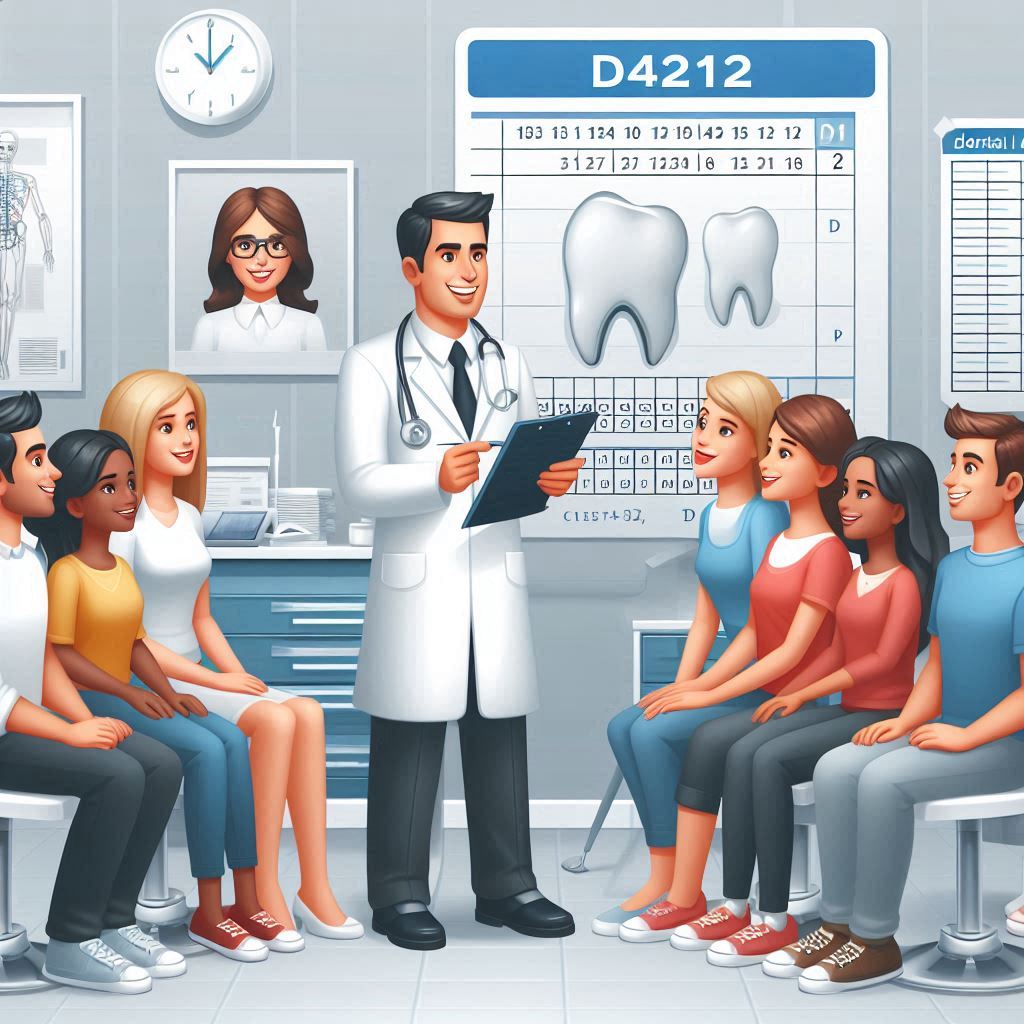D4212 Dental Code
Gum health is a critical component of overall oral wellness, yet periodontal diseases affect millions of people worldwide. When non-surgical treatments fail to address excessive gum tissue or periodontal pockets, a gingivectomy (D4212) may be recommended. This surgical procedure removes diseased or overgrown gum tissue to restore oral health and improve aesthetics.
In this exclusive, in-depth guide, we will explore everything you need to know about the D4212 dental code, including its purpose, procedure, benefits, risks, and recovery. Whether you’re a dental professional or a patient considering this treatment, this article will provide detailed, well-researched insights to help you make informed decisions.

2. What is the D4212 Dental Code?
The D4212 code is classified under the American Dental Association (ADA) Current Dental Terminology (CDT) as:
“Gingivectomy or gingivoplasty – four or more contiguous teeth or tooth bounded spaces per quadrant.”
This means the procedure involves the surgical removal of gum tissue (gingivectomy) or reshaping of gum tissue (gingivoplasty) affecting four or more adjacent teeth in a single quadrant of the mouth.
Key Features of D4212:
- Performed to treat gum overgrowth (gingival hyperplasia).
- Used in managing moderate to severe periodontal disease.
- Helps eliminate deep periodontal pockets that harbor bacteria.
- Often combined with osseous surgery (D4241) if bone reshaping is needed.
3. When is a Gingivectomy (D4212) Necessary?
A gingivectomy is typically recommended in the following cases:
A. Gum Disease (Periodontitis)
- Deep pockets (>5mm) that cannot be resolved with scaling and root planing (SRP).
- Persistent inflammation despite non-surgical treatment.
B. Gingival Overgrowth (Hyperplasia)
- Caused by medications (phenytoin, cyclosporine, calcium channel blockers).
- Genetic conditions (hereditary gingival fibromatosis).
C. Cosmetic Concerns
- “Gummy smile” correction.
- Uneven gum line affecting smile aesthetics.
D. Crown Lengthening (Pre-Restorative)
- Exposes more tooth structure for crowns, bridges, or veneers.
4. The Gingivectomy Procedure: Step-by-Step Breakdown
Step 1: Diagnosis & Treatment Planning
- Periodontal probing measures pocket depths.
- X-rays assess bone loss.
Step 2: Anesthesia
- Local anesthesia numbs the area.
Step 3: Tissue Removal
- A scalpel, laser (Waterlase, diode), or electrosurgery tool removes excess gum tissue.
Step 4: Hemostasis & Suturing (If Needed)
- Bleeding control with electrocautery or sutures.
Step 5: Dressing Application
- A periodontal pack may be placed to protect the site.
Step 6: Post-Op Instructions
- Avoid spicy/hot foods, smoking, and vigorous rinsing for 48 hours.
5. D4212 vs. Other Periodontal Codes: Key Differences
| Code | Description | Key Difference |
|---|---|---|
| D4210 | Gingivectomy (1-3 teeth) | Fewer teeth treated |
| D4211 | Gingivectomy (4+ teeth) | Same as D4212, but older version |
| D4212 | Gingivectomy (4+ teeth, per quadrant) | Most commonly used |
| D4241 | Osseous surgery (bone reshaping) | Includes bone modification |
6. Benefits of Gingivectomy (D4212)
✔ Reduces periodontal pockets → lowers infection risk.
✔ Improves gum aesthetics → enhances smile symmetry.
✔ Prevents tooth loss by stopping disease progression.
✔ Minimally invasive compared to flap surgery.
7. Potential Risks and Complications
- Bleeding & swelling (first 24-48 hours).
- Infection risk (if post-op care isn’t followed).
- Tooth sensitivity (temporary).
8. Post-Procedure Care and Recovery
- Soft diet for 3-5 days.
- Saltwater rinses after 24 hours.
- Avoid smoking (delays healing).
9. Cost and Insurance Coverage for D4212
- Average cost: 300−300−600 per quadrant.
- Insurance coverage: Often covered if medically necessary (e.g., periodontal disease).
10. FAQs About D4212 Gingivectomy
Q1: Is a gingivectomy painful?
No, local anesthesia ensures a painless procedure. Mild discomfort may occur afterward.
Q2: How long does healing take?
Full healing takes 2-4 weeks, but initial recovery is 3-7 days.
Q3: Can laser gingivectomy reduce recovery time?
Yes, laser gum surgery often results in less bleeding and faster healing.
11. Conclusion
The D4212 gingivectomy is a vital periodontal procedure for treating gum disease, overgrowth, and aesthetic concerns. With precise surgical techniques and proper aftercare, patients can achieve healthier gums and improved oral function. Always consult a board-certified periodontist to determine if this treatment is right for you.


